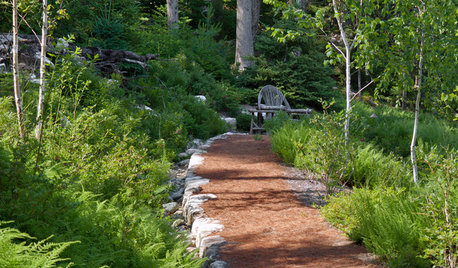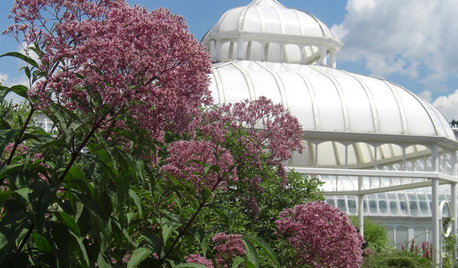Fresh leaves, weeds, plants for green composting?
tariqblaze
10 years ago
Related Stories

GARDENING GUIDESGreat Design Plant: Bugle Weed, a Quick Ground Cover
It’s highly adaptable, suppresses weeds, reduces erosion and provide weeks of bright flowers. Just watch for invasiveness
Full Story
GARDENING GUIDESLet's Weed Out 4 Native Plant Myths
Plant wisely for a garden that supports pollinators and requires less work
Full Story
GARDENING GUIDESGet on a Composting Kick (Hello, Free Fertilizer!)
Quit shelling out for pricey substitutes that aren’t even as good. Here’s how to give your soil the best while lightening your trash load
Full Story
GARDENING GUIDES5 Ways to Naturally Win the Weed War
Show irksome weeds no mercy with these tricks for combating them sans chemicals
Full Story
EDIBLE GARDENSNatural Ways to Get Rid of Weeds in Your Garden
Use these techniques to help prevent the spread of weeds and to learn about your soil
Full Story
GARDENING GUIDES5 Weed-Smothering Ground Covers
Let these landscape plants do the dirty work of choking out weeds while you sit back and enjoy the view
Full Story
GARDENING GUIDES5 Things to Know About Weeding and Mulching Your Native Garden
What’s the best time to pull weeds? How thick should the mulch be? Here’s the scoop for a healthy landscape
Full Story
FLOWERSGreat Design Plant: Joe Pye Weed
This unsung beauty tolerates wet soil, provides beautiful late summer blooms and attracts butterflies and hummingbirds
Full Story
FALL GARDENING5 Ways to Put Fall Leaves to Work in Your Garden
Improve your soil and yard the organic way with a valuable garden booster that grows on trees
Full Story
GARDENING GUIDESWhat's Wrong With My Plant? Leaves Often Hold the Clues
Learn how to identify common plant ailments by reading their leaves
Full StoryMore Discussions






klem1
floral_uk z.8/9 SW UK
Related Professionals
Maple Valley Landscape Architects & Landscape Designers · Vernon Hills Landscape Architects & Landscape Designers · Garden City Landscape Architects & Landscape Designers · Maple Valley Landscape Contractors · Brookfield Landscape Contractors · Milton Landscape Contractors · New Cassel Landscape Contractors · North Potomac Landscape Contractors · Oakland Landscape Contractors · Vineyard Landscape Contractors · Hershey Decks, Patios & Outdoor Enclosures · Pittsburgh Decks, Patios & Outdoor Enclosures · Rocklin Decks, Patios & Outdoor Enclosures · Spanaway Decks, Patios & Outdoor Enclosures · Vandalia Decks, Patios & Outdoor EnclosuresKimmsr
lazy_gardens
klem1
toxcrusadr
lazy_gardens
seysonn
floral_uk z.8/9 SW UK
c6-zr1